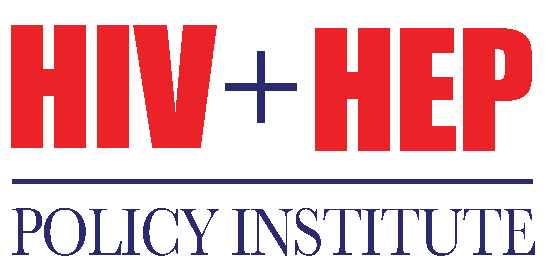Comments on NAIC draft pharmacy benefit manager model law

Chair, Pharmacy Benefit Manager Regulatory Issues (B) Subgroup
National Association of Insurance Commissioners
444 North Capitol Street NW
Suite 700
Washington, DC 20001
Dear Commissioner Stolfi, Deputy Administrator Keen, and PBM Subgroup Members:
Please find the attached comments by the HIV+HEP Policy Institute on the draft NAIC Pharmacy Benefits Manager (PBM) Model Law. The HIV+HEP Policy Institute is a leading HIV and hepatitis policy organization promoting quality and affordable healthcare for people living with or at risk of HIV, hepatitis, and other serious and chronic health conditions. People with HIV and hepatitis rely on medications for their treatment and in the instance of hepatitis C, a cure. Access and affordability to these lifesaving medications are mainly controlled by PBMs.
We are pleased that the NAIC has turned its attention to the important role of PBMs in ensuring access to medications for patients living with HIV, hepatitis, and others who rely on prescription drugs. Our comments on the draft model law seek to improve it by:
- Ensuring greater transparency in the work of PBMs;
- Ensuring greater enforcement in any law that is adopted;
- Establishing that PBMs have a fiduciary relationship with health carriers; and
- Allowing PBMs to pass rebates on to consumers. Many of the proposed revisions align with those recommendations being submitted by the Consumer Representatives to the NAIC.
While most consumers interface with their insurance carriers, access and affordability of prescription drugs is largely controlled by PBMs. The three largest PBMs in the country who control 75 to 80 percent of covered lives1 , decide which drugs are on a plan’s formulary. They also establish which tier a drug is placed on. People living with HIV, hepatitis, and many other chronic conditions, frequently must access drugs that PBMs arbitrarily place on specialty tiers. On this tier, patients are required to pay the highest cost-sharing levels, frequently in terms of co-insurance, which can be upwards to 50 percent of the list price of a drug. After placing all HIV drugs, no matter their list cost, on the highest tier, the State of Florida found this practice to be discriminatory. Other states and the federal government have also stated that placing all drugs to treat a specific health condition on the highest tier to be discriminatory.
Rebates and other price concessions negotiated by the PBMs with drug manufacturers play a significant role in determining not only formularies and tiering but also prior authorization, step-therapy, and other utilization management techniques. These additional access restrictions present substantial barriers for people trying to access their medications prescribed by their providers to best meet patients’ medical needs. PBMs also decide whether new and innovative medications are added to formularies and dictate the removal of approved medications from formularies, often done midyear, which force patients to switch from medically stable treatments.
While there has been rightfully great public attention made to the growing problem of high drug prices, PBMs play an increasingly significant role in why we in the United States have high drug prices. PBMs demand substantial rebates from manufacturers and negotiate fees from health insurers which determine drug formularies, cost tiering, and other utilization management techniques. A recent analysis of 2018 spending by the Berkeley Research Group found that health insurers, hospitals, pharmacies, and other health system payers received nearly 50 percent of what was spent on brand medicines in 2018, up from 33 percent five years ago.2 While some of these rebates are statutorily mandated, the increase has been largely driven by higher rebates negotiated by PBMs. However, these rebates are very rarely passed onto consumers. Instead, the rebates incentivize manufacturers to set high list prices in order to account for the rebates that are expected by purchasers and actors in the drug supply chain.
Drug Channels Institute estimated for 2019 that the gross-to-net bubble—the dollar gap between sales at brand-name drugs’ list prices and their sales at net prices after rebates and other reductions—reached $175 billion. This is an increase from $166 billion in 2018 and an increase of $73 billion from just five years ago.3 PBMs have an important role in creating the gap between list and sales price.
To complicate matters, much of this is being done without any regulation and transparency. Laws aimed to ensure proper licensing and business practices of PBMs are critically important and many states have taken steps to do just that. After a reporting requirement law was passed in Texas, a recent study found that while PBMs received almost $857.5 million from pharmaceutical drug manufacturers, only $16 million was passed on to enrollees, while $177.6 million was retained by the PBMs as revenue and $663.9 million was passed onto the health issuers.4
For all of these reasons, the HIV+Hep Policy Institute strongly supports the NAIC in taking these steps to improve state insurance department regulation of PBMs “to promote, preserve and protect the public health, safety and welfare.” Clearly, it is long past time for state insurance commissioners to regulate PBMs. On behalf of patients across the country who are struggling to access and afford their prescription medications, we thank you for undertaking this process to draft a model PBM law and appreciate the opportunity to provide comments on the draft. We look forward to future deliberations as the NAIC moves forward with this important work. Should you have any questions or comments, please feel free to contact me at cschmid@hivhep.org or (202) 462-3042. Thank you.
Sincerely,

Carl E. Schmid II
Executive Director
CC: Jolie Matthews
1 National Academy for State Health Policy, Pharmacy Benefit Manager Model Legislation: Questions and Answers, August 9, 2018, https://www.nashp.org/pharmacy-benefit-manager-model-legislation-questions-and-answers/.
2 BRG, “Revising the Pharmaceutical Supply Chain: 2013 – 2018,” January 9, 2020, https://www.thinkbrg.com/insights/publications/revisiting-the-pharmaceutical-supply-chain-2013-2018/.
3 Drug Channels Institute, “The Gross-to-net Bubble Hit $175 Billion in 2019: Why Patients Need Rebate Reform,” August 4, 2020, https://www.drugchannels.net/2020/08/the-gross-to-net-bubble-hit-175-billion.html.